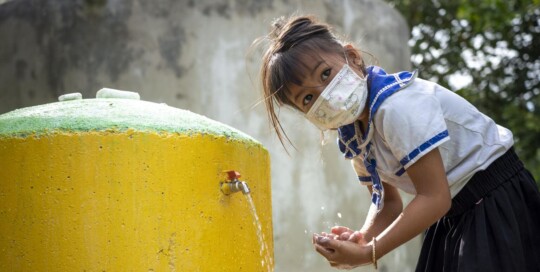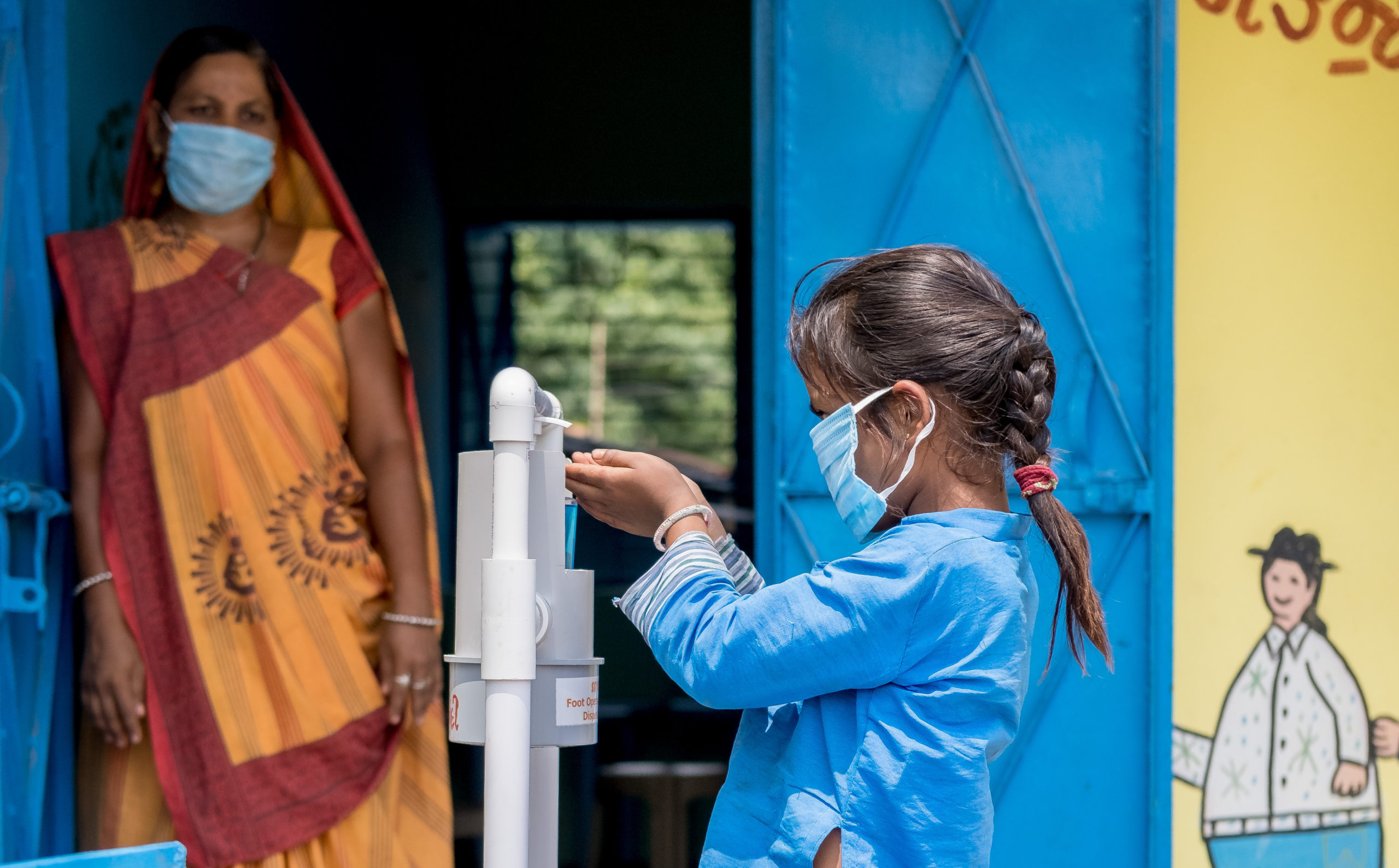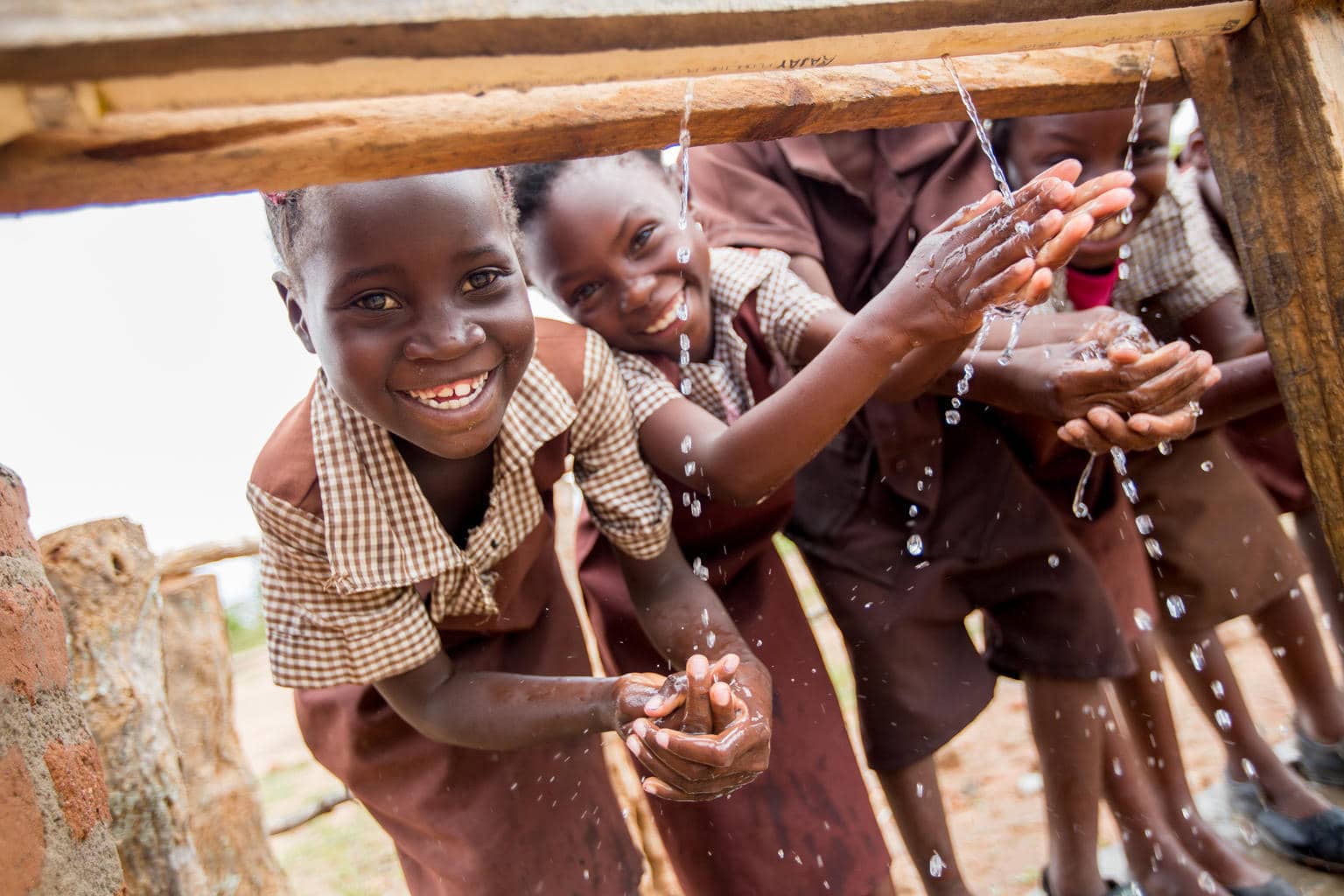Every child has the right to a quality education, which includes access to drinking water, sanitation and hygiene (WASH) services while at school. Children spend a significant portion of their day at school, where WASH services can impact student learning, health, and dignity, particularly for girls. The inclusion of WASH in schools in the Sustainable Development Goals (targets 4.a, 6.1, 6.2) represents increasing recognition of their importance as key components of a ‘safe, non-violent, inclusive and effective learning environment’ and as part of ‘universal’ WASH access, which emphasizes the need for WASH outside of the home.
The WHO/UNICEF Joint Monitoring Programme for Water Supply, Sanitation and Hygiene (JMP) expanded its global databases to include WASH in schools and published harmonized national, regional and global baseline estimates in August 2018. A progress update was released in August 2020 including estimated trends from 2015 to 2019 with a special focus on the implications for ensuring the safety of students and school staff during the coronavirus disease 2019 (COVID-19) pandemic. In 2022, the JMP released a data update for the period 2000-2021 with thematic analysis on preparing schools for future pandemics and providing disability-inclusive WASH services in schools. The JMP publication on the updated methodology for global monitoring of WASH in schools explains in details the methods to produce those estimates.
JMP monitoring of WASH in schools includes tracking ‘basic’ drinking water, sanitation and hygiene services in pre-primary, primary and secondary schools. Definitions of ‘basic’ services have been developed by a global task team convened by the JMP and incorporated into new JMP service ‘ladders’ for WASH in schools. JMP estimates for WASH in schools are based on the harmonized core indicators and the 2018 report presented the first national, regional and global estimates for the new SDG indicators.
The latest JMP report on WASH in schools presents progress on WASH in schools and finds that in 2021:
- 71 per cent of schools had a basic drinking water service, 14% had a limited service, and 15% had no service. Nearly 546 million children worldwide lacked at basic drinking water service at their school.
- 72 per cent of schools had a basic sanitation service, 16% had a limited service, and 15% had no service. Nearly 539 million children worldwide lacked a basic sanitation service at their school.
- 58 per cent of schools had a basic hygiene service, 17% had a limited service, and 25% had no service. Nearly 802 million children worldwide lacked a basic hygiene service at their school.
Drinking water in schools
In 2021, seven out of ten children had a basic drinking water service at their school.
The provision of water at schools is one of the ‘highly effective practices in increasing access and learning outcomes’.[1] In addition to the necessity of water to maintain personal and environmental hygiene, reducing student dehydration in schools has been associated with improved cognitive abilities.[2] In 2021, nearly 546 million children worldwide (29 per cent) lacked at basic drinking water service at their school and among them over 288 million children (15 per cent) had no drinking water service at their school. Global coverage of basic drinking water services in schools increased by 0.25 percentage points per year from 2015 to 2021. Achieving universal access by 2030 would require a 14x increase in current rates of progress. Coverage of basic drinking water service was lower in primary schools (67 per cent) compared to secondary schools (76 per cent).
7 out of 8 SDG regions had estimates for basic drinking water services in 2021
Global and regional coverage of drinking water services in schools, 2015–2021 (per cent)
Sanitation in schools
In 2021, nearly three out of four children had basic sanitation service at their school.
The availability of functional and private school toilets can positively impact health and learning outcomes, particularly for girls.[3] In 2021, nearly 539 million children worldwide (29 per cent) lacked a basic sanitation service at their school. Among them nearly 240 million (13 per cent) had no sanitation service at their school. Global coverage of basic sanitation services in schools increased by 1.14 percentage points from 2015 to 2021. Achieving universal access by 2030 would require a 3x increase in the current rates of progress. Coverage of basic sanitation service was lower in primary schools (68 per cent) compared to secondary schools (75 per cent).
All 8 SDG regions had estimates for basic sanitation services in schools in 2021
Global and regional coverage of sanitation services in schools, 2015–2021 (per cent)
Hygiene in schools
In 2021, nearly three out of five children worldwide had a basic hygiene service at their school.
Handwashing has strong links to health, particularly in public or institutional settings.[4] Despite the importance of handwashing with soap, nearly 802 million children (42 per cent) lacked a basic hygiene service* at their school in 2021. Over 480 million children (25 per cent) had no hygiene service at their school. Global coverage of basic hygiene services in schools increased by 0.92 percentage points per year from 2015 to 2021. Achieving universal access by 2030 would require a 5x increase in current rates of progress. Coverage of basic hygiene service was lower in primary schools (58 per cent) compared to secondary schools (60 per cent).
7 out of 8 SDG regions had estimates for basic hygiene services in schools in 2021
Global and regional coverage of hygiene services in schools, 2015–2021 (per cent)
References
[1] World Bank Group, World development report 2018: Learning to realize education’s promise, International Bank for Reconstruction and Development/The World Bank, Washington DC, 2018.
[2] Edmonds, Caroline J., and Denise Burford, ‘Should Children Drink More Water? The effects of drinking water on cognition in children’, Appetite, vol. 52, no. 3, June 2009, pp. 776–779; Fadda, R., et al., ‘Effects of Drinking Supplementary Water at School on Cognitive Performance in Children’, Appetite, vol. 59, no. 3, December 2012, pp. 730–737.
[3] Jasper et al, Water and sanitation in schools: a systematic review of the health and educational outcomes, Int. J. Environ. Res. Public Health, 2012; Lopez-Quintero et al, Handwashing among school children in Bogota, Colombia, American Journal of Public Health, 2009; Bowen et al, A cluster-randomized controlled trial evaluating the effect of a handwashing-promotion program in Chinese primary schools, American Journal of Tropical Medicine and Hygiene, 2007.
[4] Jasper et al, Water and sanitation in schools: a systematic review of the health and educational outcomes, Int. J. Environ. Res. Public Health, 2012; Lopez-Quintero et al, Handwashing among school children in Bogota, Colombia, American Journal of Public Health, 2009; Bowen et al, A cluster-randomized controlled trial evaluating the effect of a handwashing-promotion program in Chinese primary schools, American Journal of Tropical Medicine and Hygiene, 2007.
Drinking water, sanitation and hygiene (WASH) estimates
Water, sanitation & hygiene (WASH) data
Build and download your own customisable dataset
Resources




Notes on the data
WHO/UNICEF Joint Monitoring Programme for Water Supply, Sanitation and Hygiene
Since 1990, WHO and UNICEF have tracked progress on global water and sanitation goals through the Joint Monitoring Programme for Water Supply, Sanitation and Hygiene (JMP). The JMP monitors trends in coverage; helps build national monitoring capacity in developing countries; develops and harmonises questionnaires, indicators and definitions to ensure comparability of data over time and among countries; and informs policymakers of the status of the water supply and sanitation sector through annual publications. The JMP draws guidance from a technical advisory group of leading experts in water supply, sanitation and hygiene, and from institutions involved in data collection and sector monitoring. Further information about the JMP and its methodology can be found at the JMP website.
Data sources
The JMP estimates for WASH in schools are based on information collected through national Education Management Information Systems (EMIS), censuses and surveys, as well as secondary sources (e.g. UNESCO UIS) in the absence of primary data. Data are harmonized to the extent possible based on the indicator definitions for ‘basic’ service. Further details on indicators, data sources and methods for WASH in schools estimates can be found at the JMP website, including recommended core questions to support harmonized monitoring: Core questions and indicators for monitoring WASH in schools in the SDGs.
Definitions of basic WASH services in schools
Schools with an improved drinking water source with water available at the time of the questionnaire or survey are classified as having ‘basic’ service. Schools without water available, but with an improved source are classified as having ‘limited’ service, and those with unimproved or no water source are classified as having ‘no service’.
Schools with improved sanitation facilities which are single-sex and usable at the time of the survey or questionnaire are classified as having ‘basic’ service. The term ‘usable’ refers to toilets or latrines that are accessible to students (doors are unlocked or a key is available at all times), functional (the toilet is not broken, the toilet hole is not blocked, and water is available for flush/pour-flush toilets), and private (there are closable doors that lock from the inside and no large gaps in the structure). Those using improved sanitation facilities which are either not single-sex or not usable are classified as having ‘limited’ service. However, pre-primary schools without single-sex toilets may still be considered to have ‘basic’ sanitation service if the toilets are usable. Schools with unimproved or no toilets are classified as having ‘no service’.
Schools with handwashing facilities with water and soap available at the time of the questionnaire or survey are considered to have ‘basic’ service. Those with handwashing facilities that have water available at the time of the questionnaire or survey, but no soap, are considered to have ‘limited’ service, while schools with no facilities or no water available for handwashing are classified as having ‘no service’.